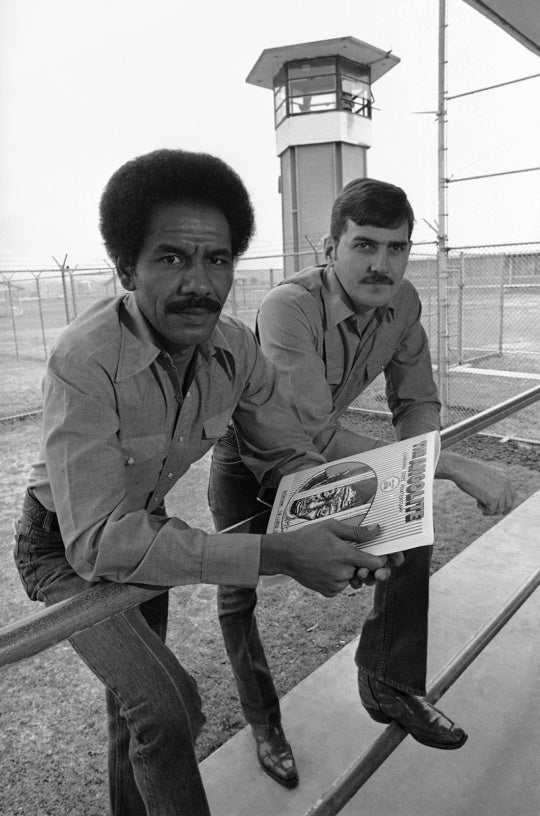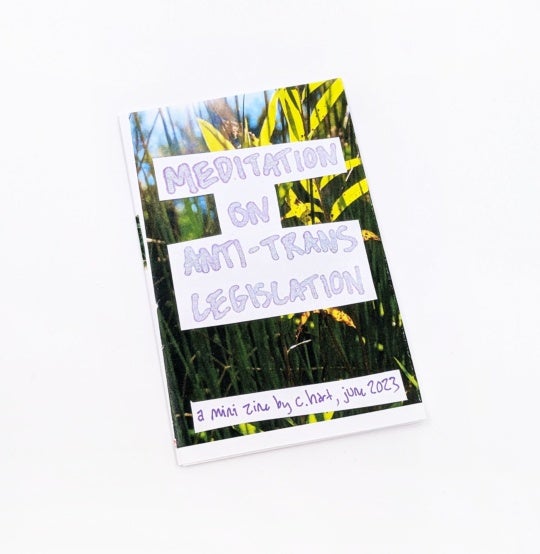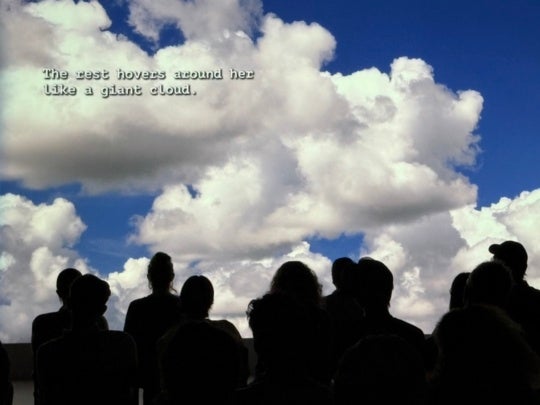
During my visit to Memphis on a hot August morning when the thermometer was already approaching 100 degrees Fahrenheit, the cool temperature of Tops Gallery’s subterranean space offered welcome respite. Located in the basement of an old industrial building on Front Street, the gallery feels both hip and romantically forgotten.
The gallery’s current exhibition, “Screen Door,” on view through September 8, features four well-regarded contemporary painters—Ann Craven, Dana Frankfort, E.J. Hauser, and Margaux Ogden—whose work ranges from expressionistic text-based compositions to carefully balanced figuration and abstraction. Curated by New York-based writer Hunter Braithwaite, the exhibition riffs on the concept and image of a screen door, considering it both as a surface and a metaphor for painting. While screen doors aren’t unique to the South, a long and storied cultural history connects the screen door and the region’s summer heat. These architectural scrims found on many Southern porches create a portal between interior and exterior, as well as public and private, space. Each painter included in “Screen Door” negotiates this premise in varied and unique ways.

During the journey through the basement to the gallery, you find yourself facing an alcove containing Dana Frankfort’s painting The and Margaux Ogden’s Three Wrestlers (Icy Green). The placement of these paintings within the space feels organic, as if they were part of the slightly decrepit cement walls. Ogden, one of New York’s most promising emerging painters, creates delicate works with a classic, timeless quality. Her intricate compositions and nuanced use of color values make for seductive, visually alluring paintings. Each of Ogden’s six paintings vary in their intensity, both in terms of color and how they interact with their environment. This is particularly evident in the anteroom where her paintings Three Wrestlers (Gray, Green, and Pink) and Three Wrestlers (Pyrole Orange, Pink) glow within the dark space, almost appearing to borrow energy from the nearby exposed HVAC system.
One of the most unexpected yet delightful works in the anteroom, Frankfort’s And Yet And Yet, first appears as a tangle of matte and gloss violet brushstrokes, which slowly seem to reveal space and text as you consider it more closely.The painting’s placement, which shares a bulkhead that includes a large hole that guests must navigate to enter the main gallery, calls attention to the seductive surfaces found on the wall and in Frankfort’s painting. Both share a façade that is worn and rough, yet also rustically welcoming. Frankfort, who lives and works in Houston, has been long recognized for paintings that sensitively integrate language and touch. With seven paintings in the exhibition, more than any other artist included, Braithwaite’s selections allow the viewer to sense the breadth of Frankfort’s oeuvre, ranging from the prominent text found within her paintings Of and And to more abstract works such as Written Word.

The main gallery, which features works by all four artists, is the most traditional of the rooms comprising Tops. On the day of my visit, the weather was pleasant enough for the gallery’s signature manhole to be removed, allowing light and sound to enter the space. Like a screen door, the open hole became a permeable boundary connecting the artwork to the outside world. With sounds of honking cars and human voices echoing throughout the space, the images in E.J. Hauser’s paintings seemed to hover in the gap that separates the certain from the mysterious. Hauser, a New York-based painter, makes work that explores the possibilities of addressing a digital world through analog marks. In Hauser’s five paintings in the main gallery, images of feet, arched figures, or animals materialize visually through indeterminate lines and specks. Near the main gallery’s exit, a pair of Hauser’s paintings, landscape man (blue) and landscape man (purple), meet her painting little yellow foot in a corner that provides a venue for small works that generate outsized satisfaction.
The main gallery also includes a small alcove with the only white walls found within Tops, showing Ann Craven’s Quadriptych (Bird With Pussy Willows, Hit Songs on Lavender and Black). The painting, which features four panels with alternating images of diagonal stripes and a single bird on branches, is the most overtly representational work in the exhibition. Since Craven uses excess paint from the bird panels to create the paired minimalist canvases, there is a strange yet intelligible connection within the work. In this way, Craven creates a Lynchian world where subject and environment are married in a manner that calls attention to fact and fiction simultaneously.

I would be remiss if I didn’t mention Tops Gallery’s secondary location, a downtown window space located under Pocket Part on Madison Avenue. Viewed from the street, Frankfort’s Of and Ogden’s The Dance (I) challenge the viewer to reconsider the notion of a screen door. As I stood in front of the window, surveying the surrounding modernist architecture, I couldn’t help but wonder if glass has now replaced the screen door—which, like a painting, both conceals and reveals.




